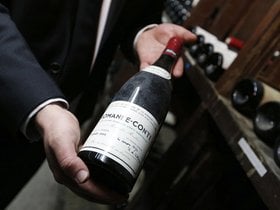All About Champagne: Styles, 10 Best Bottles to Buy (2025)
Since the 19th century, Champagne has been seen as a symbol of luxury and celebration! In fact, this regal sparkling wine is highly valued by wine collectors, enthusiasts, and investors alike.
But what makes Champagne so special? Which Champagne bottles should you try?
Let’s explore all about Champagne, the difference between Champagne and sparkling wines, Champagne styles, sweetness levels, and the 10 best bottles to buy now.
We’ll also check out why Champagne is usually expensive, its investment potential, and how to invest in it through Vinovest.
Further reading
- If you’re a French wine fanatic, be sure not to miss this Ultimate Guide to French Wine.
- Also, find out all about The Irresistible Moet Champagne and how to invest in them!
What Is Champagne?
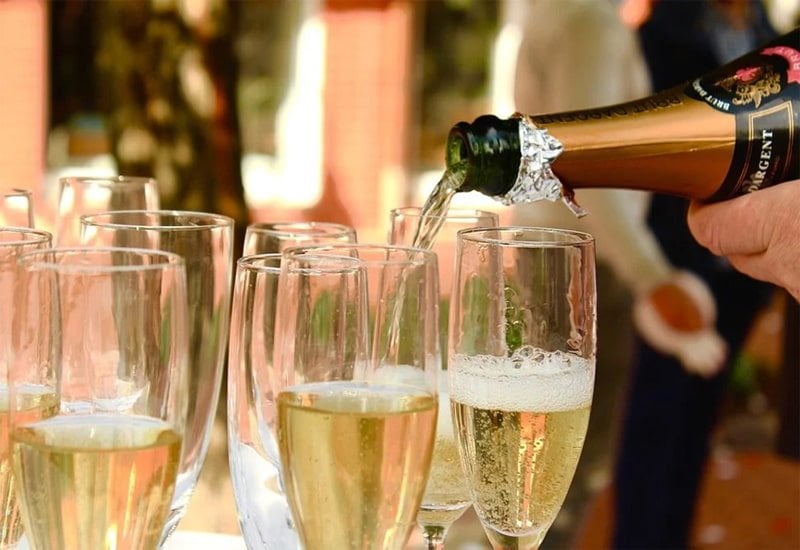
Champagne is a sparkling wine produced in the Champagne region of France. It has to adhere to rigorous quality regulations and a controlled winemaking process that includes a second fermentation in the bottle (méthode champenoise).
The Grape Varieties Used in Champagne
Champagne wine is usually made from Chardonnay, Pinot Noir, and Pinot Meunier grapes. A winemaker might also add small amounts of Pinot Blanc, Arbane, Petit Meslier, and Pinot Gris to the blend.
The Regional Classifications of Champagne
Champagne is classified into three categories — Grand Cru, Premier Cru, and Autre Cru. The term “Cru” refers to “growth” and describes wines, vineyards, winemaking villages, or wineries.
- Grand Cru: A top-tier classification of French wine. The term means “great growth” and refers to a winery or vineyard that produces high-quality wines.
- Premier Cru: A wine classification term that translates to “first growth.” It’s just a notch below the Grand Cru classification.
- Autre Cru: The term means “other crus,” which refers to Champagne made from other regions than Premier and Grand Cru.
What Does Champagne Taste Like?
Champagnes from different vintages, blends, and producers vary in taste. Also, the taste depends on the ratio of the different grape varieties used in the blend.
Pinot Noir gives the wine a darker color and more decadent aromas, while Pinot Meunier adds distinctive acidity and bright aromas. Meanwhile, Chardonnay lends elegant flavors of ripe stone fruits and a rich, creamy texture.
What Is the Alcohol Level in a Champagne Bottle?
A Champagne bottle contains around 12.2% alcohol by volume (ABV). But this varies with the wine style and the winemaking techniques used.
What Is the Amount of Calories in Champagne?
A standard Champagne serving (4oz) contains roughly 75-95 calories. But most restaurants serve a 5oz serving of Champagne, which has around 90-150 calories.
Which Champagne Has the Least Amount of Sugar?
The Brut Zero Champagne has the least amount of sugar — around 0-3 grams per liter.
What Are the Different Champagne Bottle Sizes?
Champagne is usually fermented in standard bottles (750 ml), magnums (1.5 l), and Jeroboam “double magnum” bottles (3 l).
Larger bottle sizes, such as Primat bottles (27 l) and Melchizedek (30 l), are rare and usually offered exclusively by the Champagne house Champagne Drappier.
How Much Does a Bottle of Champagne Cost?
The cheapest Champagne bottle costs around $12, while the most expensive one costs over $9,000.
So, is Champagne the same thing as sparkling wine?
The Difference Between Champagne and Sparkling Wine
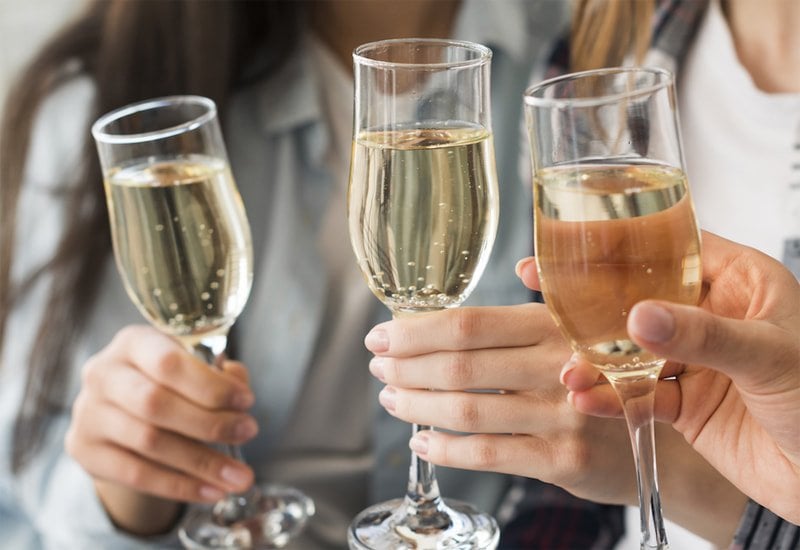
Sparkling wine can be called “Champagne” only if it’s made in the Champagne region of France.
In other words, all Champagnes are sparkling wines, but all sparklers cannot be labeled as Champagne!
In some regions, sparkling wines can be labeled in different ways. In Italy, the wines might be labeled as Spumante or Prosecco, and in Spain - Cava. In Austria and Germany, it’s usually called Sekt.
All sparkling wines are made according to standards specific to the wine region, and the grapes used are usually different.
Let’s now check out the different styles of Champagne that you can choose from.
Champagne Styles

Champagne comes in various styles depending on the grape varieties used.
The most popular Champagne types include:
- Prestige Cuvée: This is a blended sparkler made with the finest grapes collected from the best vineyards. Some classical Prestige Cuvées include Champagnes like Taittinger Comtes de Champagne and Perrier-Jouet Belle Epoque.
- Blanc de Noirs (white of blacks): This white Champagne is made entirely from the Pinot Noir and Pinot Meunier black grape varieties.
- Blanc de Blancs (white of whites): This is a white Champagne made entirely from Chardonnay grapes. The wine is sometimes made from white grapes like Pinot Blanc.
- Rosé: Rosé Champagne is made by leaving the red grape skins to be in contact with the wine juice for a short time. This gives the wine a soft, blush color. Sometimes, Rosé Champagne is made by blending a little bit of red wine with sparkling wine.
Now, you must’ve heard of Brut and sweet Champagne. These terms refer to the sweetness levels of thebubbly.
Champagne Sweetness Levels
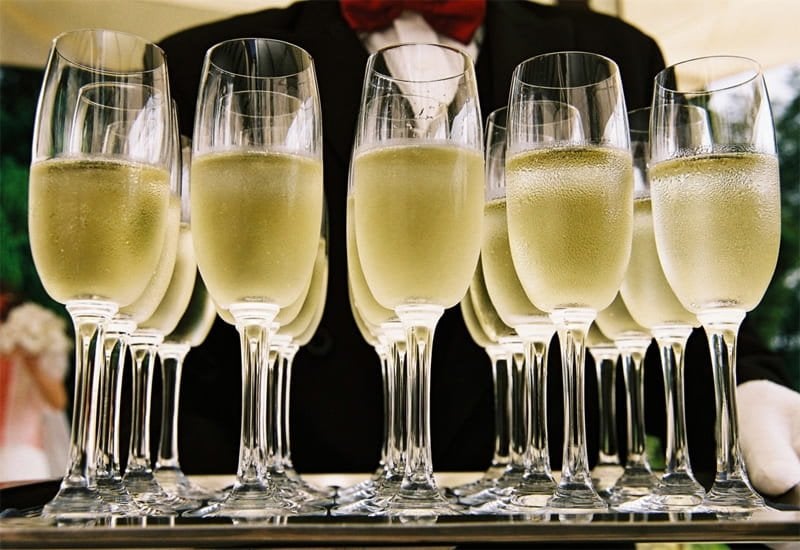
Here are the terms that describe the sweetness levels of Champagne:
- Brut Zero (Brut Nature): 0-3 grams of sugar per liter
- Extra Brut: 3-6 grams of sugar per liter
- Brut: 6-12 grams of sugar per liter
- Extra Dry: 12-17 grams of sugar per liter
- Sec: 17-32 grams of sugar per liter
- Demi-sec: 32-50 grams of sugar per liter
- Doux (Dulce): 50+ grams of sugar per liter
So, which Champagne bottle is the best?
10 Best Champagne Bottles to Buy in 2022 (Including Tasting Notes)
- 1996 Dom Perignon Rose Gold
- NV Moet & Chandon Esprit du Siecle Brut
- 2002 Louis Roederer Cristal 'Gold Medalion' Orfevres Limited Edition Brut Millesime
- 1995 Krug Clos d'Ambonnay Blanc de Noirs Brut
- 1988 Bollinger R.D. Extra Brut 'Spectre' James Bond 007 Edition
- 1983 Billecart-Salmon 'Cuvee Nicolas-Francois Billecart' Millesime
- 2015 Deutz Hommage a William Deutz 'La Cote Glaciere' Brut
- 2013 Louis Roederer Blanc de Blancs Brut Millesime
- NV Ruinart 'R de Ruinart' Brut
- NV Pol Roger Rich Demi-Sec
Here are the finest Champagnes that deserve your attention - in a range of prices, from super-expensive bottles to the most affordable ones:
1. Dom Pérignon Rose Gold 1996 ($56,628)
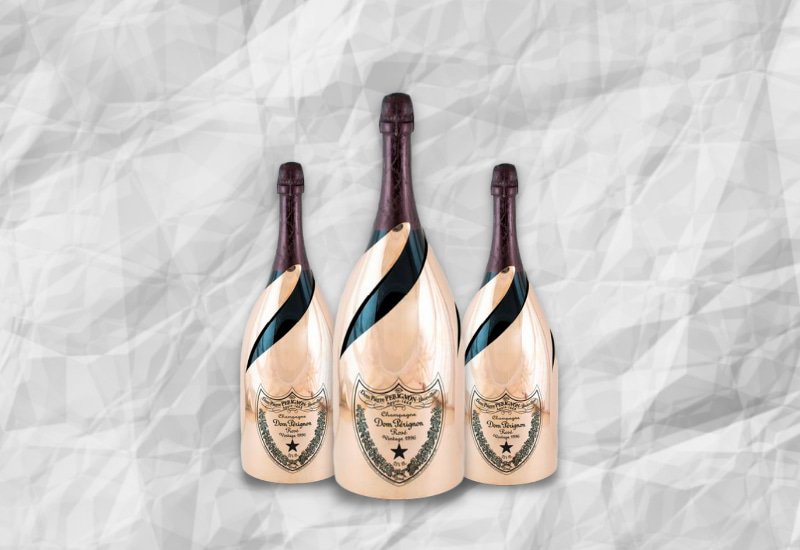
This pink French sparkling wine boasts lovely strawberry flavors and fruity aromas with subtle nutty notes - a fine treat for any wine enthusiast!
2. NV Moet & Chandon Esprit du Siècle Brut ($6,072)
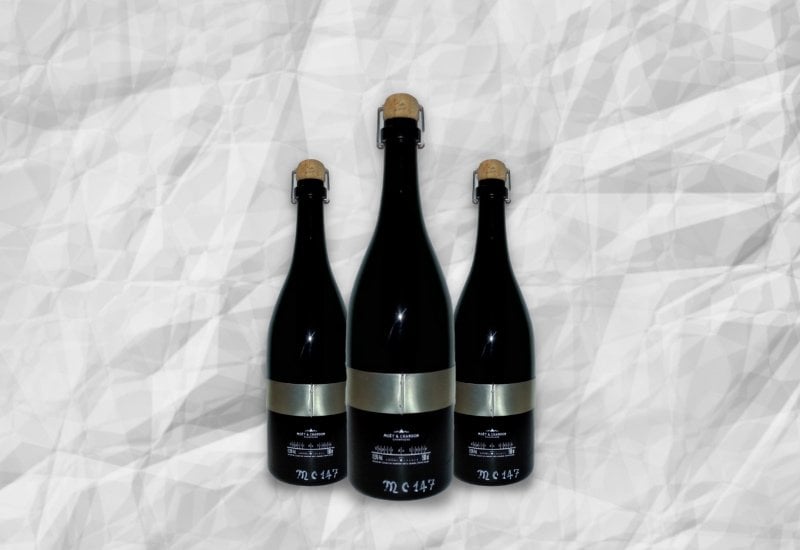
This bottle of Champagne opens with a creamy texture and fruity richness. Made using fine fruit from the Champagne wine region, this dry Moet & Chandon French Champagne boasts gentle fruit aromas and a long finish.
3. Louis Roederer Cristal 'Gold Medalion' Orfevres Limited Edition Brut Millesime 2002 ($4,627)

This Louis Roederer Cristal Champagne displays fresh citrus aromas, subtle spicy notes, and a fresh, crisp finish.
4. Krug Clos d'Ambonnay Blanc de Noirs Brut 1995 ($3,819)
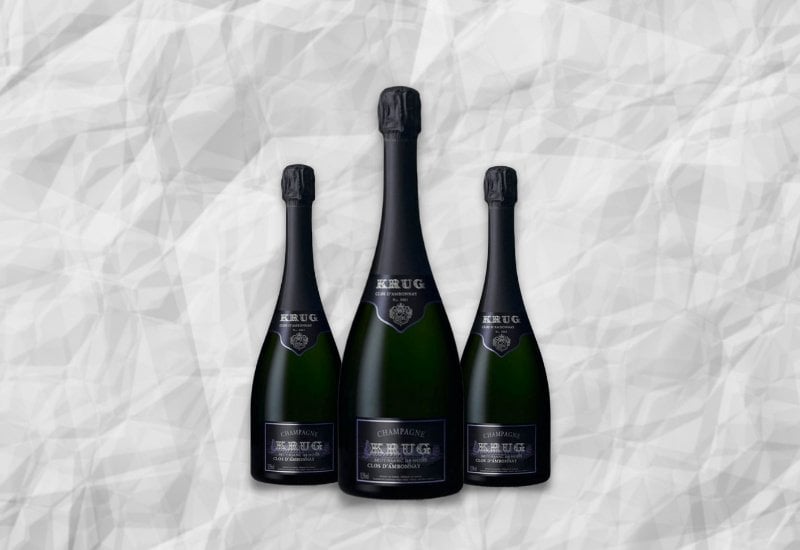
Made by the prestigious Krug Champagne House, this vintage Brut Champagne shines with citrus aromas and elegant flavors of caramel and vanilla with light mineral undertones.
5. Bollinger R.D. Extra Brut 'Spectre' James Bond 007 Edition 1988 ($2,925)
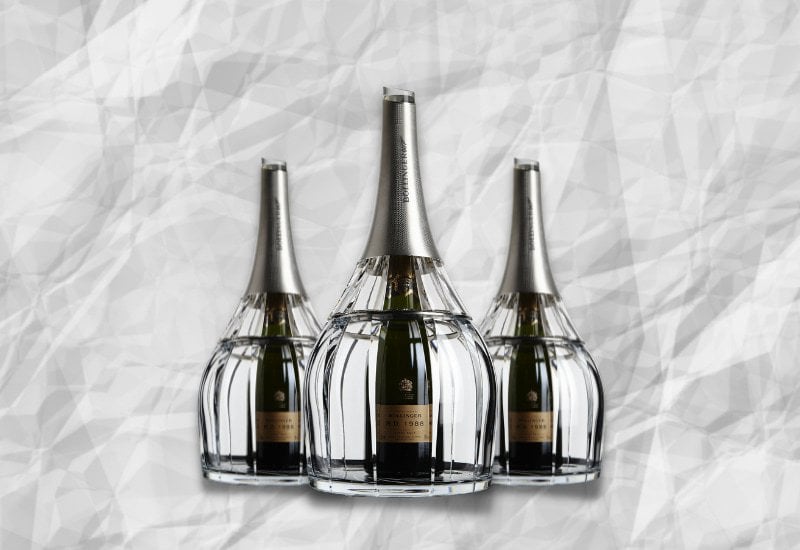
This French Champagne from the Bollinger winery displays extraordinary elegance, a fruity aroma, and a flavor profile that boasts citrus fruit with soft hazelnut undertones.
6. Billecart-Salmon 'Cuvee Nicolas-Francois Billecart' Millésime 1983 ($609)
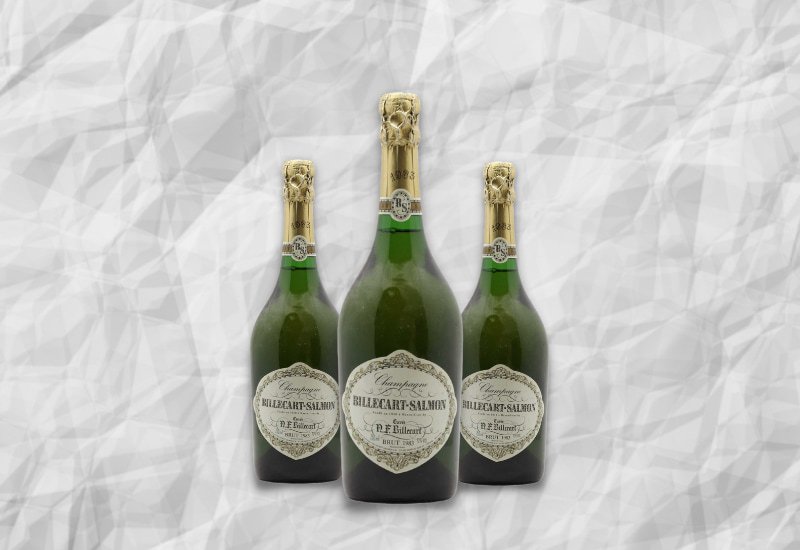
Made by the Billecart-Salmon Champagne House, this vintage bubbly offers citrus fruit aromas, a creamy texture, and distinctive flavors of peach and pear with toasty undertones.
7. Deutz Hommage a William Deutz 'La Cote Glaciere' Brut 2015 ($87)

This delectable French sparkling wine offers a zesty minerality, floral aromas, and ripe fruit flavors with citrus, honey, and almond notes.
8. Louis Roederer Blanc de Blancs Brut Millesime 2013 ($82)
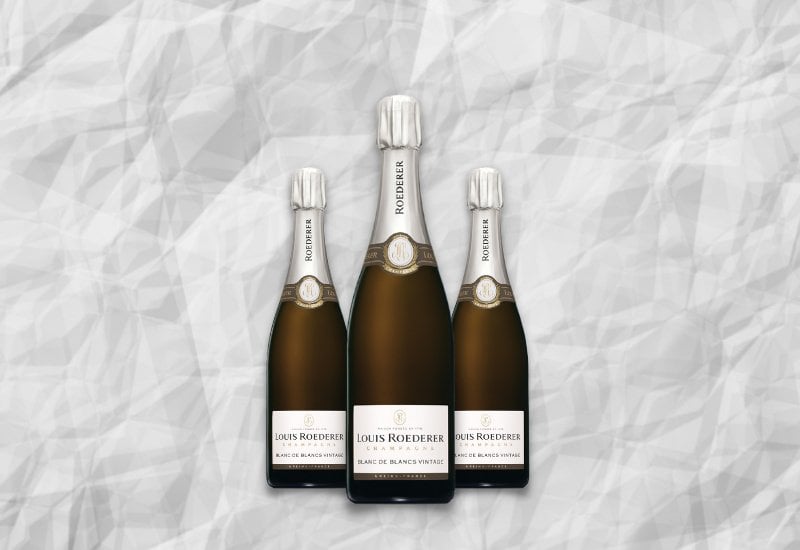
This Brut Champagne displays full-bodied richness, delightful effervescence, light acidity, white flower aromas, and orchard fruit flavors with biscuit, chocolate, and caramel notes.
9. NV Ruinart 'R de Ruinart' Brut ($56)

This non vintage Champagne is made from Pinot Noir, Pinot Meunier, and Chardonnay grapes. It’s a delicious bubbly wine boasting floral aromas, crisp freshness, and white fruit flavors with earthy notes that express terroir.
10. NV Pol Roger Rich Demi-Sec ($47)

This non-vintage Champagne from the Pol Roger winery has a soft texture, gentle acidity, crisp freshness, and a flavor profile that boasts citrus fruit and apple notes.
Naturally, you’d be wondering:
Why Is Champagne so Expensive?
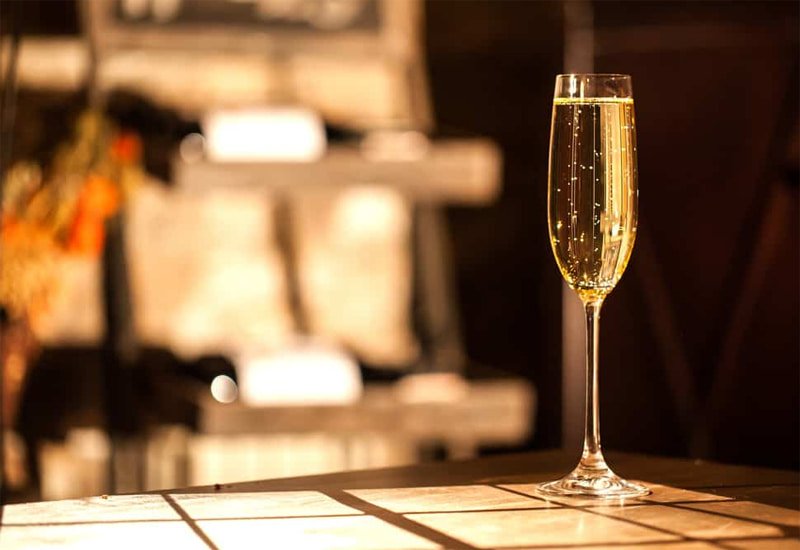
Champagne is usually the most expensive type of sparkling wine. Here’s why:
- Champagne grapes are sometimes affected by frost and hail, and some years produce much smaller yields. So, the complexities in grape cultivation drive the grapes’ price up.
- According to AOC regulations, grape harvest must be made by hand, which is costlier and more time-consuming than using machines.
- The methode champenoise (the Champagne winemaking method), which involves the second fermentation, requires a lot of time and manual labor.
- Champagne bottles usually age for years before being released for sale, and the wines’ value increases with time.
Is Champagne Good for Long-Term Investment?
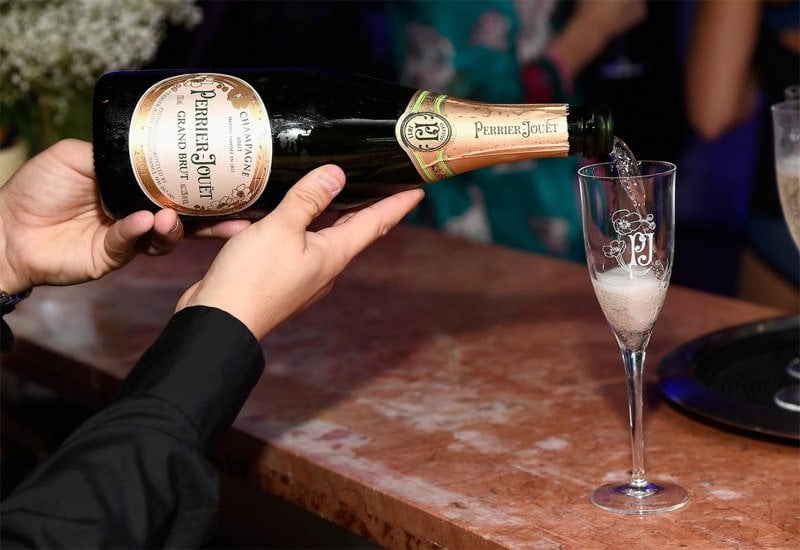
Champagne is an excellent wine for long-term investment.
The demand for Champagne is rising, but the production is scarce (especially for vintage Champagne.)
Interestingly, the price appreciation track record of Champagne is remarkably stable. For example, during the 2008 great recession, the stock market, real estate, and wine prices from other regions plunged. However, the average prices for Champagnes continued rising.
Besides, the value of Champagne also increases as it ages.
For example, a vintage Dom Perignon 2008 released at $1,460 in mid-2015 increased in value by 16% in just one day. In the same year, the Louis Roederer Cristal 2005 wine appreciated by 30% in 12 months.
Additionally, expensive Champagne is a favorite at auction houses!
- A special deluxe edition of Louis Roederer Cristal 1990 vintage Champagne was sold for $18,000 at Christie’s New York auction in 2006.
- In 2009, a well-preserved Krug bottle from 1928 was sold for $21,200 at Acker Merrall & Condit in Hong Kong.
- In 2008, a 1959 Dom Pérignon Rosé vintage Champagne bottle was sold for $42,700 by Acker Merrall & Condit in New York.
A combination of all these factors makes Champagne a drink that’s highly valued by wine enthusiasts and investors.
By now, you might be wondering how you can get your hands on a rare, authentic bottle of fine Champagne.
Luckily, you can use a reliable wine investment platform like Vinovest. This platform helps you buy, store, and sell Veuve Clicquot wine, Piper-Heidsieck wine, Grand Cru Champagne, white wine, red wine, Laurent-Perrier wine, and other fine bottles in a hassle-free way.
Now, you’ll notice that Champagne bottles usually contain very confusing terms that refer to their producers.
Let’s look at how you can read them.
What Do the 2-Letter Codes on Champagne Labels Indicate?
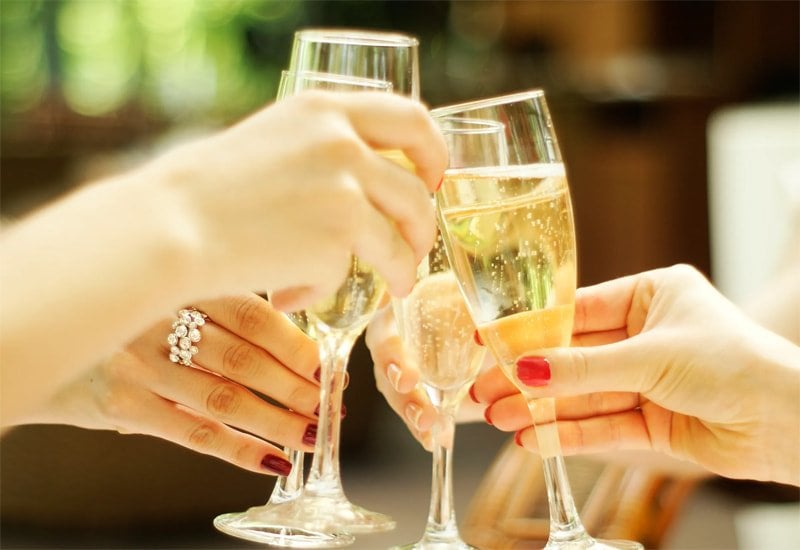
The Champagne region comprises about 19,000 grape growers and more than 100 Champagne wine houses.
Most grape growers sell their fruit to winemakers, and only a few Champagne producers make Champagne from their own grapes.
Here’s what the 2-letter code on a bottle tells you about the producer:
- NM: Producers who buy grapes to make Champagne
- CM: Co-operatives that make wine from the grapes of winegrowers who are part of the co-op
- RM: A grower who makes wine from his own grapes (grower Champagne)
- SR: A non-cooperative association of growers who make wine from a shared pool of grapes
- RC: A co-op member selling Champagne under the name of the co-operative
- MA: A winemaker who produces wine under a different brand name
- ND: A wine distributor selling under his own name
Now, how do you serve your favorite bottle of bubbly?
How to Serve Champagne
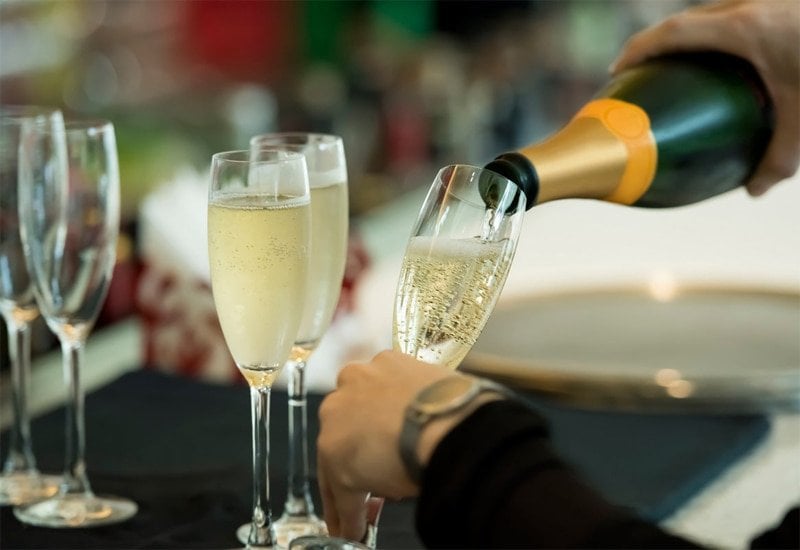
Here are some tips on how you can serve Champagne:
Should Champagne Be Chilled?
Serve Champagne slightly chilled at around 45-48°F (7-9 °C.) You can cool down the bottle in a bucket with ice water for half an hour before popping the cork (this will help retain the bubbles.)
How Do You Properly Open a Champagne Bottle?
To prevent spilling, you must tilt the bottle at an angle and start rotating the cork while holding it. This way, you’ll also allow some air in the bottle (while lowering the pressure on the inside.)
Which Glass Should You Use When Serving Champagne?
Champagne is usually served in Champagne flute glasses. The glasses’ tall shape allows the sparkling wine to preserve its effervescence for longer.
How Do You Properly Pour Champagne?
To pour Champagne properly, you should tilt the wine glass and gently pour the liquid down its side (this will prevent mousse creation.) Don’t fill the glass to the brim - only pour about two-thirds of the glass.
Should You Store Champagne in the Refrigerator?
Never store your unopened champagne bottle in the fridge. Instead, store it in a cool, dark place until you’re ready to enjoy it.
When it’s time to pop your bottle of bubbly, place the bottle in the fridge for about 45 minutes and then serve the wine slightly chilled.
Does Champagne Go Bad?
An opened Champagne will go bad within a few days if you don’t store it in the refrigerator. Meanwhile, an opened Champagne bottle will last you up to five days when properly refrigerated.
Which Champagne Is Good for Mimosas?
Champagne is actually not an ideal ingredient for mimosas. For best results, make your mimosas with sparkling wines that mix well with juice - such as Cava or Prosecco.
What are the best dishes to pair with Champagne?
Food Pairings With Champagne
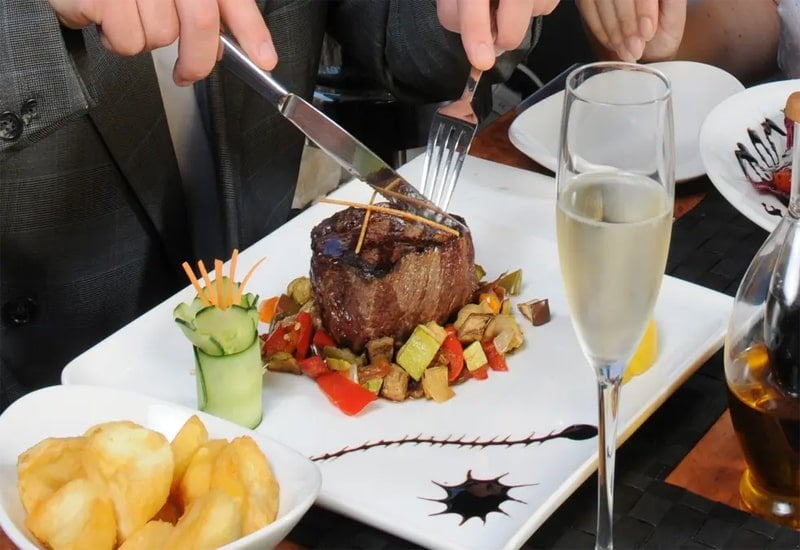
Champagne pairs well with different foods - from rich cheese platters to seafood dishes like baked salmon and oysters. These drinks also complement poultry and red meat dishes.
If you want a Champagne that goes well with dessert, go for the demi-sec or doux sparklers.
Let’s now explore the Champagne region, how the wine is made, and its origin story.
The Champagne Region & the Origins of Champagne
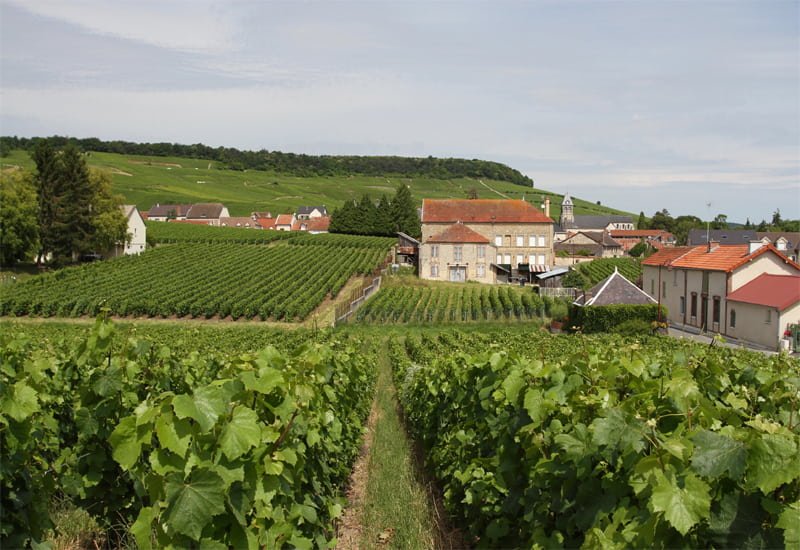
The Champagne region lies in Northern France, between Epernay, Reims, and Aÿ. It has a cold climate with an average temperature of around 50°F (10°C.)
The region’s temperature creates the perfect conditions for growing Chardonnay, Pinot Noir, and Pinot Meunier - the primary grapes used in Champagne.
The Champagne wine region has five appellations (AOCs) comprising 17 Grand Cru and 42 Premier Cru villages. The appellations include:
- Côte des Blancs
- Côte de Sézanne
- Côte des Bar
- Montagne de Reims
- Vallée de la Marne
Fun fact: Other appellations in the Champagne region (like Coteaux Champenois) specialize in making still wine.
Famous Champagne Producers
Some of the top Champagne brands are:
- Moët & Chandon
- G. H. Mumm
- Pol Roger
- Louis Roederer
- Ruinart
- Veuve Clicquot Ponsardin
- Bollinger
- Krug
- Piper-Heidsieck
- Taittinger
The Origins of Champagne
Until the 5th century, Champagne winemakers only produced still wines, despite effervescence being observed in 4000 BC.
Dom Perignon, a Benedictine monk, is often credited with inventing Champagne, but English scientist Christopher Merrett actually discovered the technique 30 years earlier. The secondary fermentation in the bottle, which created the bubbles, was initially considered a flaw. High pressure caused some bottles to burst, leading to the nickname "devil's wine."
Eventually, sparkling wines gained popularity, even among French and English royalty.
How Is Champagne Made?
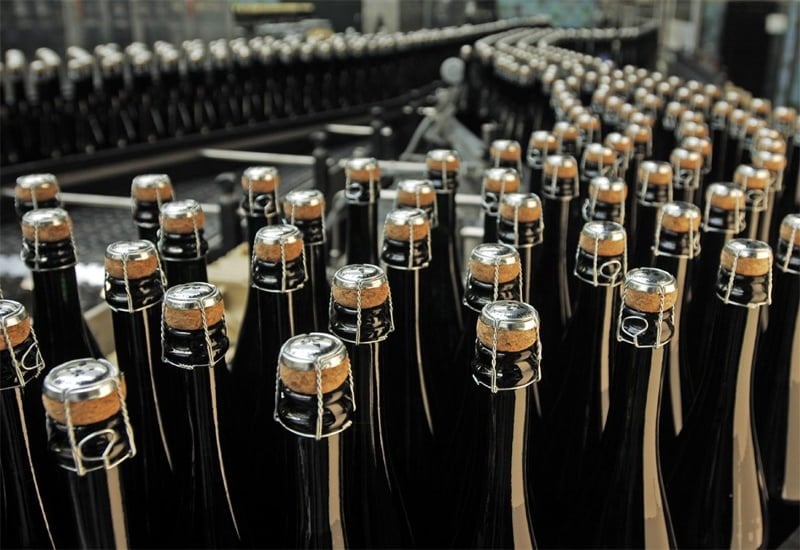
To produce bubbly, winemakers use the méthode champenoise, also known as the Traditional Method.
Here’s what happens during Champagne production:
- Pressing: The winemaker harvests the grapes and then gently presses them to extract the grape juice.
- Primary fermentation: The winemaker adds yeast to the blend, and the sugar ferments into alcohol.
- Blending: Once the first fermentation is complete, the still wine is then combined with reserve wines to create the base wine.
- Secondary fermentation: The base wine is then poured into the bottles, along with yeast and sugar. These bottles are then sealed and stored horizontally for about eight weeks to undergo the second fermentation. Alcohol and carbon dioxide are produced in the process.
- Aging in the Cellars: Once the secondary fermentation is over, the wine is aged in the cellars. The dead yeast cells (lees) are produced in the process. The wine is then aged for a couple of years on the lees.
According to the Comité Champagne (trade association) and the Champagne AOC rules, non-vintage Champagne must be aged on the lees for a minimum of 15 months, while vintage Champagne should be aged for at least 3 years.
- Riddling: Each bottle is placed at a 75-degree angle. From there, it’s gradually turned upside down each day. This process makes the lees settle at the neck of the bottle.
- Disgorgement: After riddling, the yeast in the neck of the bottle is removed through a process called disgorgement. During the process, the bottle’s neck is frozen in an ice-salt bath. From there, the bottle cap is removed, and the pressure inside the bottle expels the lees.
- Adding the Dosage: The wine lost during the disgorgement stage is replaced with a mixture of still wine and sugar (dosage.) The dosage amount added determines the wine’s sweetness levels.
- Aging: Once the cork is replaced with a permanent one, the Champagne can be aged for a further 12-36 months before release.
Ready to Buy an Elegant Bottle of Champagne?
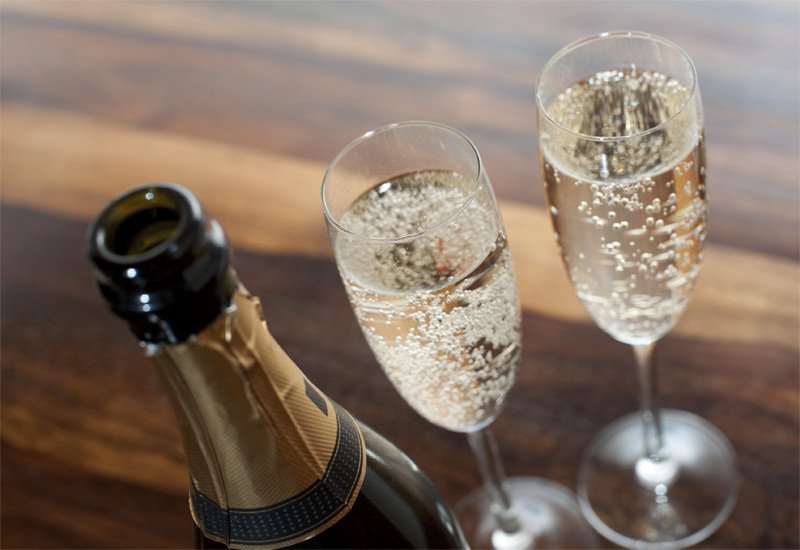
Known as one of the best celebratory drinks, Champagne adds a sparkle to every special occasion.
Besides, some of these finest bubbly wines make excellent, long-term investments.4

Visit the Vinovest website to buy, store, and sell the best Champagne such as Dom Perignon, Veuve Clicquot, and other bottles from Italy, Spain, France’s Burgundy region, and all over the world.



